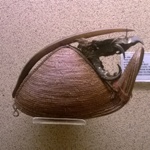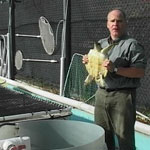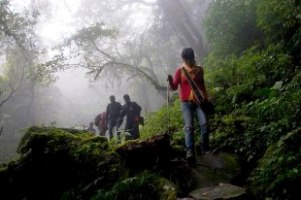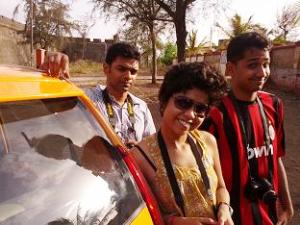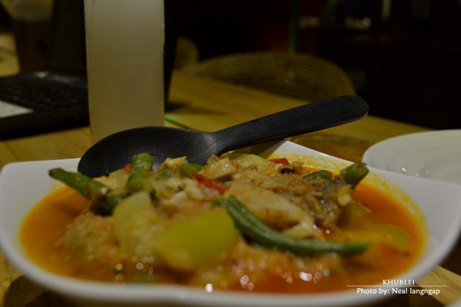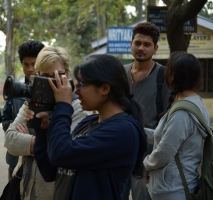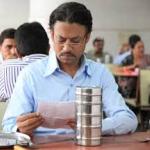“We trekked on foot for 18 days carrying a lot of rice,” says Ohey Tayem about the hornbill nest counting exercise which was conducted last year in November. The trek saw Tayem and members of the expedition begin their journey from the Pakke Tiger Reserve in Sejiosa, East Kameng all the way to Bhalukpong in West Kameng district. The 32-year old Tayem is one of the 12 ‘nest protectors’ of the Hornbill Nest Adoption Programme (HNAP).
The HNAP which began in January 2012 is a unique venture which sees the coming together of the Mysore-based Nature Conservation Foundation, forest department authorities and members of the local Nyishi tribe.
The Nyishis, like most tribes of the state, traditionally relied upon hunting for sustenance. However, with the advent of time, hunting which was always confined to meet basic needs began taking a different form. It is a familiar story that finds resonance in every corner of the world. What is unique amongst the Nyishis however is that the capture of the hornbill has always been valued the most. The primary reason for that being that Nyishi men don the upper beak of the Great Hornbill as part of their tribal headgear known as the ‘Bopiya/Bopa’. Hunting, coupled with deforestation over the years meant that the already declining hornbill population began plummeting further from the lack of nesting trees. It is because of this that the HNAP was initiated.
Like the 12 other nest protectors, Tayem’s day begins a little after sunrise at 6 am and ends by dusk at 4 pm. His basic task is that of a log-keeper and protector of the nests. Working around an area 100 metres radius, Tayem must ensure that no unnatural threat comes in the way of the hornbills during their nesting period which usually spans the months of January till April. He says that the nest protectors are divided into groups who also keep a check on each other to ensure there isn’t any duplicity in numbers. But that is about the cusp of human activity involved in the entire process as natural threats of monitor lizards and other smaller birds occupying the nests are allowed to happen. The logic being simply that nature must be allowed to take its own course.
The nest adoption programme has also had benefits not just for the birds but for the local populace as well which only become clear after a little digging.
Due to deforestation and slash-and-burn farming (jhum cultivation) which is still in practice, agriculture as a means to earn income has never been a viable option for the local community. What compounds the problem further is the presence tigers in the surrounding areas which sometimes stray into the peripheral villages and take away cattle. Wild elephants are another major threat. With the launch of HNAP, villagers have found new modes of income generation. For instance, Tayem who works year-round makes a modest earning of Rs 3,500 for eight months. The remaining four months are counted as voluntary work and nest protectors are not provided any monetary remuneration for that period. While the monthly earning may not be much, it still allows local youths to provide for their families without having to relocate to bigger urban areas far from home. And there are others who have been able to benefit indirectly from the nest adoption programme. Takum Nabam, chairman of the local NGO Ghora Aabhe Society is one such individual.
The Ghora (village) Aabhe (father) Society, as the name suggests, is a local organisation composed of village elders which was instrumental in introducing and implementing the HNAP in the area. Continued efforts to create awareness and deter tribesmen from hunting down hornbills led to generation of interests from varied sections. After the programme was launched, nest adopters from across the globe began taking interest and started coming to the tiny hamlet of Seijosa. Located far from both the district headquarter of Seppa and the state capital Itanagar, accommodation options in the town are far and few in between. As researchers and tourists alike began pouring in, it became clear that quality accommodation facilities needed to be established. This is where Nabam saw potential and set up the Pakke Jungle Camp, a facility with bamboo houses made in the traditional manner on stilts known by the Assamese term ‘chang ghar’.
Run by the Ghora Aabhe Society and Help Tourism, the modest facility has had around 171 guests since 2011 from countries such as Denmark, Switzerland, Germany, Ireland, Canada, and the United Kingdom besides domestic tourists and researchers. While it isn’t exactly a thriving business, the caretaker of the camp Suresh Pait informs that the motive behind setting up the camp was never commercial to begin with.
A teacher by profession, Pait who originally hails from the East Siang district of Arunachal Pradesh says that the idea behind the camp is to promote eco-tourism. Getting the camp to become fully operational was not an easy task either and he admits that the idea may never have materialised had the NCF and local MLA Atum Welly not helped with the initial funding.
The impact of the HNAP and hornbill conservation efforts which actually began much earlier has also had greater economic impact outside of the Seijosa area as well.
Working from his home at Jully Village just outside the state capital Itanagar, Kara Rakap has made significant gains by manufacturing the traditional headgear. The 50-year old who candidly admits to dying his hair black has been making the ‘bopiya’ since 2002 but also informs that business really picked up in the last six years. A Nyishi himself, Rakap says that making ends meet during the past as a farmer was difficult and that now his income has enhanced considerably.
The declining population of hornbills made many realise that instead of hunting down the birds to be used as part of the headgear, an alternative was needed. It is because of this that modern bopiyas adorn artificial beaks made from either wood or fibre glass. The headgears in turn are sold at prices ranging from Rs 2500 to Rs 7000 depending on the finish and quality. For Rakap and his family, that is a considerable amount of money. However, since each bopiya is hand-made, he only manages to carve out four artificial beaks per day and it takes him a total of eight days to make a complete headgear. The demand for these headgears has grown so much in recent years meeting demands has become difficult. Of late, they have also gained much preference as an item of gift especially amongst the Nyishi populace.
While the success stories related directly or indirectly with the conservation efforts are many, the biggest credit must be reserved for the forest department officials of Seijosa. Besides promoting conservation efforts through awareness campaigns, the department has also been acting as a facilitator between the different NGOs and members of the local community. And if special praises must be directed at one particular official, that honour must be given to the Divisional Forest Officer Tana Tapi.
The detached and yet motivated official says that early efforts in 2005 were met with some amount of reservation by the people. But through constant dialogue and interaction with the local community, the need to protect the hornbills has firmly sunk in. It helps of course, that the forest department has been able to aid in income generation of the locals. The nearby Pakke Tiger Reserve (which was in news recently for capturing images of four melanistic cats through trap cameras) employs 205 people, 90 percent of whom are from the surrounding areas. Additionally, besides the thriving headgear-manufacturing cottage industry and those employed under the HNAP, nest identifiers are also paid a remuneration of Rs 2000 each. The department has also adopted some rather innovative methods to promote conservation in the area.
Since much of the tribal population in the state use palm leaves as roofs for the traditional bamboo stilt houses, felling of palm trees is a common practice. Unfortunately, population growth and expansion of nuclear families has meant that this once traditional practice threatens the trees themselves. In order to keep a check on the unintentional deforestation, Tapi and his department began handing out CGI sheets to villagers as a replacement to palm leaves.
Government officials who are passionate about their jobs are a rare breed. Rarer still are men like Tana Tapi and Ohey Tayem who come from a community which boasts of great hunters and yet realise that in today’s day and age, perhaps saving animals instead of savouring them is a much nobler cause.

